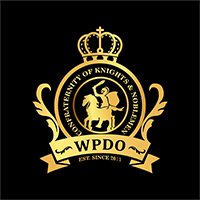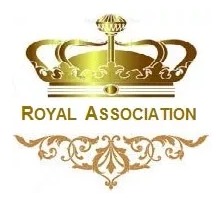Confraternity of Knights and Noblemen under Royal Association
Man has invented many accolades throughout history to recognize his fellowmen. Knighthoods and Noble titles are the honours most widely known and highly coveted.
These honours have meanings and history which spans centuries, continents and oceans. Many people have quaint notions on the subject. It is, therefore, necessary to give a clear picture of how the institutions originated and spread all over the world, particularly for those who wish to bear such titles with dignity.
The legend of ‘Excalibur’, the magic sword, and the ‘arm clothed in white Semite, mystic and wonderful’ that arose out of the lake and how King Arthur rowed across and retrieved it and, not only ‘wore it like a king’, but created a band of knights to fight injustices and uphold knighted Sir Francis Drake in Plymouth when he returned from the historic wars after ‘singeing the King of Spain’s beard’. College history books describe vividly how Sir Walter Raleigh covered a puddle of muddy water with his brand new multi-coloured cape, for the Good Queen Bess to walk over. That was a real knightly trait. Sir Philip Sidney, courtier, poet, states man, soldier who at the battle of Zutphen handed the cup of cold water meant for him, to a dying soldier with the classic humanitarian statement ‘thy need is greater than mine’; another gentlemanly trait of a good knight.
The confraternity bestows every year the Knight/Dame honoris titles accepting nomination from WPDO Confraternity of Knights & Nobleman in affiliation with Global Royal Associations & Other Partnering orders Globally commonly known as knights of Peace & Humanities that holds the Charter of the sovereign order of St. John of Jerusalem or KNIGHTS OF MALTA, also known as the Global Peace & Humanities Order It is accepted worldwide. The late Grand Master Vella Haber had the original documents of the Charter.

Nobility
Romans recognized three orders: patricians, equestrians and plebeians, and earlier, before the foundation of the republic, a fourth: royalty. Added to this, there was the concept of nobilis; to be noble meant you were descended from someone who had been Consul; being a patrician was necessary to become Consul (though you could buy your way in), but to be noble was ineffably grander, at least to the Roman way of thinking. This has been turned around a bit in Italy; in Italian cities today, a “patriciate” exists which is considered to be above “mere” nobility.
These notions of the Romans apply to present-day parlance. In the British system, one can discriminate between royalty, nobility, knights, gentry and commons: five grades. The Germans tend to regard certain of what the British regard as gentry as noble, and at the highest levels, what the British define as noble resembles what the Germans regard as “princely” and in general, continental systems as a whole tend to have a broader definition of “noble”.
In the West, it is nearly impossible to trace any noble lineage back much before AD 800 (though the old Gaelic nobility of Ireland has a special claim to antiquity here); anything before 1100 is remarkable. The organized system of titles we have today is a rather late development, but “count”, and “prince” go back to the Roman Empire. Only when it was recognized that one might have “betters” (i.e., with the organization of nation-states) did the nobles start paying attention to titles, styles, and pedigrees.
As far as the British Noble titles are concerned , after his victory at the Battle of Hastings in 1066, William the Conqueror, Duke of Normandy, became King William I of England and introduced feudalism into the country. From the Conquest, the King alone owned all the land of England, except for land he gave to Earls, Barons and others in return for their support, especially in providing military resources.
The manor was the basic unit of estate administration. Typically the manor contained a village church, and agricultural land usually consisting of three large arable fields in which the inhabitants (tenants) held scattered strips. Manor houses were built on land near rivers or streams, often where grass was grown for hay. An important part of manorial administration was the manor court, a periodic meeting of the tenants, presided over by the Lord of the Manor or his steward. The purpose of the court was to administer the agriculture of the manor, the Lord’s and tenant’s rights and duties, and disputes between tenants.
Titled people experience a higher status of respectability and a higher class of standing in the community. Socially a Lord or Lady is a preferred person to know and be associated with, business wise a Lord or Lady command’s a status of trust, that of a gentleman, part of the establishment or aristocracy of the high classes. Lords and Ladies get invited to more social events.
We are extremely careful about those who are invited by us to Knighthood or receive Noble Titles which are based entirely on merit and the noticeable services rendered by the person thus invited.

The International Royal Association AKA Royal Association is a Not-For-Profit, Non-Governmental Organisation and an independent union of International Royal & Noble Families & Titled Persons, uniting under the same ethos, of applying virtuous aims and acts in service to humanity.
It contains within its membership many prominent Royal including Sheikh Hamdan bin Mohammed bin Rashid Al Maktoum who is the Crown Prince of Dubai, United Arab Emirates. He is popularly known as Fazza , the name under which he publishes his poetry. Another prominent member is Her Highness Princess Putri Maamor, Dato’ Dr Romona Murad, The Chairperson for Royal Society Group Malaysia.
The Secretary General of the Association is held by His Royal Highness Prince / Tengku Pangeran Abdullah Ali Chandrarupa Wibowo who is also Second Ranking of the Royal House of HRH. Tengku Pangeran Utama Raja and HRH.Tengku Putri Utama Raja of the Royal Family of Indonesia.
Click here for website

